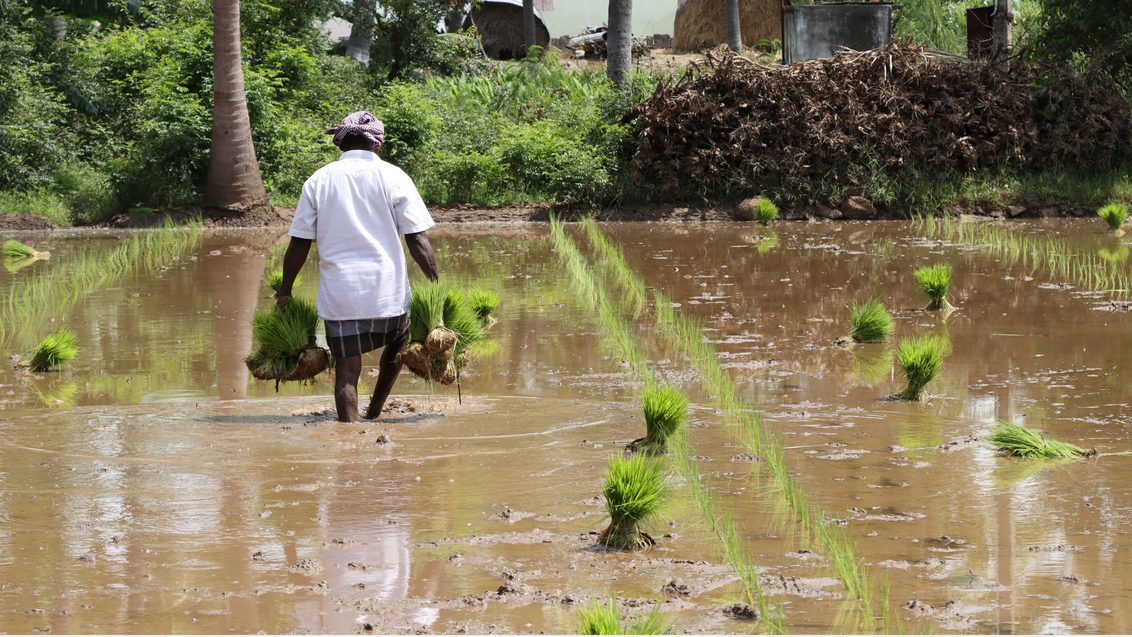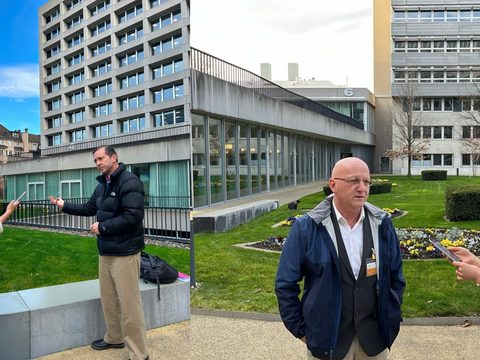Local rice tackles a dozen hurdles

Chinese examples could boost West African production
West Africa loves rice. But local production can’t yet keep up. Together with partners, we aim to change this. China’s transformation of its rice sector provides good pointers. Our Farmers’ Hubs can also help.
Rice is one of West Africa’s key staples. It plays a crucial role in food security, both for rural and urban populations. In recent years, demand has outpaced production. This is due to rapid population growth and increases in per capita consumption. The region has responded by importing more rice from Asia.
West Africa has impressively increased rice production in the past few decades. However, yields are still considerably below their potential. Although farmers in well-irrigated areas can achieve about 6 t/ha, national yields range between 2 and 3.5 t/ha. That is about half of the average in Asia.
There are numerous reasons for the low yields. They include lack of technical know-how, poor-quality seed, lack of crop insurance, and inadequate input use and farming practices. West Africa also suffers from limited irrigation facilities and poor roads. Mechanization levels are low. There is also a lack of coordination and finance along the value chain. Governments with good policies do not always implement these well. The overall results are low rice productivity and quality, as well as poverty for many smallholders.
Major studies collect Africans’ views
The Beijing Representative Office of the Bill & Melinda Gates Foundation (BMGF) is working to improve this situation in Mali and Nigeria. Together with our Foundation and local research organizations, BMGF first conducted studies in the two countries. These aimed to improve understanding of the gaps, challenges, needs and opportunities along rice value chains. The studies were extensive. In Nigeria, for example, insights came from more than 2200 interviews with producers, as well as public and private organizations. The interviews took place across eight major rice-growing states.
Earlier this year, our Foundation and partners discussed the study findings at two high-level workshops in the capital cities, Bamako and Abuja. These brought together public and private stakeholders in the African rice sector, as well as donors. Chinese experts shared their insights online. The aim was to secure stakeholder commitments to implement the improvements proposed in the studies. “Participants discussed the study findings and recommendations, and they agreed that well-known problems in the rice value chain persist”, reports Alva Kretschmer from our Policy team. “There is clearly an urgent need for innovative technologies to enhance productivity, taking China as a leading example, and to strengthen private-public dialogue in the sector.”
Qinghua Zhu knows the study findings well. He is Deputy Director for Development at BMGF in Beijing. Zhu comments that “challenges persist across the entire chain in both countries”, but also that “each of them has specific major gaps”. Nigeria faces challenges with seed supply and demand, as well as with rice processing and poor implementation of government policy. Mali has several production challenges. These include inadequate input supply and ineffective commercialization. However, producers in the four Malian regions involved primarily point to a lack of mechanization. About half of the farms essentially rely on manual tooling, and almost all use dabas, hoes and picks. The interviewees also remarked on the lack of improved rice varieties and the inadequate quality of processing equipment.
Recent Chinese development points to possibilities
These findings are in stark contrast to Asia. As the world’s largest producer and consumer of rice, China has many lessons to offer. As Zhu explains: “The country has transformed its rice sector. Production hugely benefited, for example, from technological advances, policy support, mechanization and the organization of farmers and supply chain partners”. Nigeria and Mali, he believes, can above all learn from China about increasing the availability of improved seed, streamlining standards and processes, subsidizing mechanization, and providing opportunities for investment. All these measures boost crop quantity and quality.
“BMGF and our Foundation have considerable ground in common”, notes Yuan Zhou. She heads our Policy work and China program. “We both work with governments, enterprises, and research institutes in China and Africa, as well as with regional and international organizations. We also share the goal of helping African smallholders improve their productivity, nutrition, and income.”
Together, the two organizations are now exploring opportunities for adapting China’s rice-related technologies and practices to improve the situation in Mali and Nigeria. Approaches ranging from crop improvement to the application of new farming models have the potential to improve local farmers’ food security and income. The rice program has already generated several collaborations. Chinese seed companies in Mali and Nigeria have signaled their commitment to supporting the development of stronger, inclusive, and more productive rice value chains. In Mali, field trials recently started of three improved rice seed varieties. “These could greatly increase rice output and thus benefit smallholders and the wider population”, says Yuan Zhou.
Farmers’ Hubs can boost many sectors – including rice
In Nasarawa State, Nigeria, BMGF is supporting the establishment of a rice Farmers’ Hub. Our Farmers’ Hub model has already proved its worth across several African and Asia countries. “Each Hub can significantly boost local farmers’ productivity and incomes”, knows our Nigerian Country Head, Isaiah Gabriel. “It is also a great route into business for enterprising rural youth.”
Nasarawa is a key rice-producing state, with considerable potential for growth. Many farmer organizations and rice miller cooperatives already work there. However, crop productivity and milling capacity are unable to meet demand. “One of many issues is inefficiency: Almost all rice here grows in small fields, with little mechanization”, comments Isaiah. “A more competitive sector could replace a lot of the imports and benefit from the surge in urban consumption”.
The rice Farmers’ Hub will address several challenges at once. It will sell good rice seed, and provide access to equipment for irrigation, storage, milling and parboiling, as well as production advice. All these goods and services help boost farm yields and incomes. Higher profits will result in improved livelihoods for farmers and their families, while also strengthening the rice value chain.

